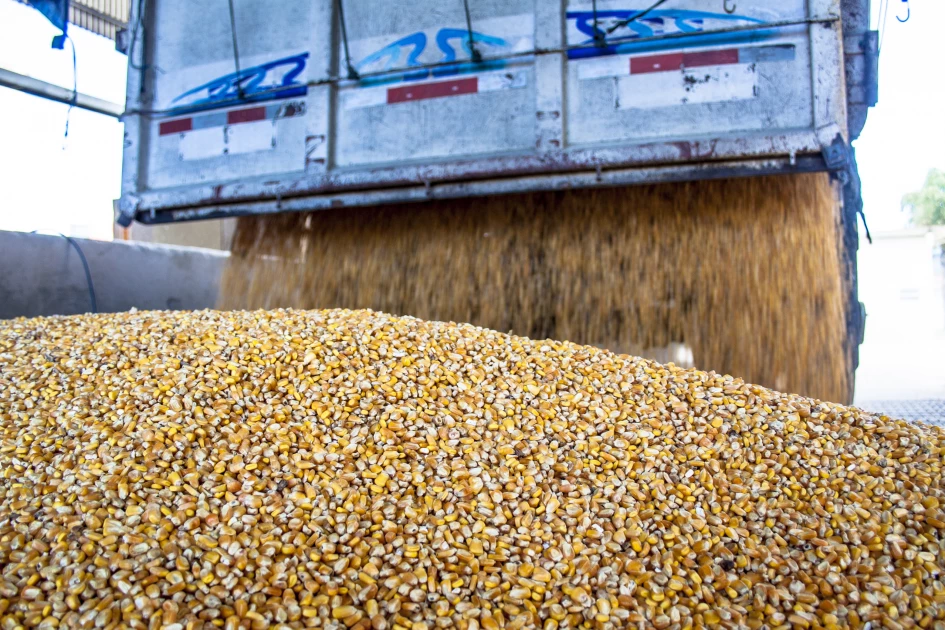Millers warn of high aflatoxin in Ugandan maize circulating in Kenya


Audio By Vocalize
Unsuspecting
maize meal consumers could be exposed to high-levels of aflatoxin in maize
imports trickling in from Uganda, the United Grain Millers Association has
warned.
Aflatoxin, a
poison produced by fungi in cereal crops including maize, peanuts, cottonseed
and tree nuts could cause fatal poisoning and an increased risk of cancer.
United Grain
Millers Association Chairman Kennedy Nyaga says that the millers have flagged
hundreds of bags of maize consignment from Busia border entry point, with
aflatoxins above recommended levels, impugning their business.
“We have had
to turn away Ugandan maize on account of being contaminated with aflatoxins.
Nevertheless, locally sourced stock is well dried, but we are worried that
after we reject this Ugandan stock, it will still end up in the local market,”
Nyagah told Citizen Digital.
The
association has maintained that its members will not be milling the Ugandan
maize, even as the supply, for the first time, outstrips demand on good weather
and bumper harvest in the current season, but cautions this might shift.
“Our
aflatoxin testing machines have picked worrying trends in the Uganda cereals to
a tune of over 200 parts per billion, as opposed to the recommended ten to
twenty parts per billion in the Comesa region,” he adds, pointing to laxity by
regulators to scrutinise imports.
This even as
in February this year, the National Cereals and Produce Board (NCPB) received
two high-end decontamination plants valued at Ksh.190 million to help clear
aflatoxins in maize. One of the plants is stationed in Bungoma, a few
kilometers from the Busia entry point, with another in the capital, Nairobi.
The two
plants that clear aflatoxins to a tune of over 98 percent are part of a Ksh.350
million Canadian government donation through the TradeMark Africa (TMA) for
Kenya, Uganda and Tanzania, in a bid to boost safety of cereals in the region.
“Western
Kenya was deemed a strategic location to set them up, as it has significant
inflows from neighboring Uganda and Tanzania. Over 600,000 metric tons of maize
is traded annually from Uganda to Kenya, and about 400,000 metric tons from
Tanzania to Kenya,” TradeMark Africa says.
However,
millers are perplexed that while it is a requirement that imported cereals
should be assessed either at the Bungoma or Nairobi NCPB depots, laxity may
have occurred ending up at their hands unchecked.
“We are
working with KEBS at the border to clear this mess, and it is suspicious since
it is so cheap to buy maize from Uganda and bring it here, so that points to
something sinister and there is need to check on that,” Nyagah notes.
Kenya is one
of the region’s countries that have set a maximum limit of 10 parts-per-billion
for total aflatoxins in maize and maize products which are similar to limits
established by the Codex Alimentarius Commission and the East African
Community.
Despite the
tough measure, recent harvests in Trans Nzoia and Uasin Gishu counties have had
massive aflatoxin levels, a Kenya Agricultural Organisation (KALRO) research
shows.
Countries in
the European Union have had to bear the brunt of excessively stringent standard
for allowable limits of aflatoxin in maize with a maximum limit of four ppb
levels. This is the lowest, even as the US exported aflatoxin-high yellow maize
cereals in the recent past.
Nyaga avers
that since most Kenyans are economically hard-pressed, the use of poshomill
produced maize flour has spiked, despite it lurking with the dangers of
producing flour with high toxicity levels.
“Given the
hard economic times, many Kenyans may not be able to purchase properly examined
maize flour, and the possibility of consuming aflatoxins in their meals are
high,” he says.
In 2021,
Kenya attracted a barrage of criticism from Uganda and Tanzania, after banning
maize imports from the two countries. At the time, the Agriculture and Food
Authority (AFA) said the reason for the ban was that levels of mycotoxins,
another toxin of family aflatoxin in the maize from the two countries were
above safety limits.
But in less
than a week the Kenyan government backtracked and announced that it had asked
its East African Community trading partners to pass sanitary and phytosanitary
standards on farm produce before it reached Kenya.
Even so,
Kenyan maize meal and other cereal products have been turned away on account of
high aflatoxins. Contamination is a long-standing problem, and for the region,
food problem in one country could have an effect in its neighbours.
In November
2019, Uganda and Rwanda banned peanut brands imported from Kenya after the
Kenya Bureau of Standards (KEBS) blacklisted them because of unsafe levels of
aflatoxin. The ban has since been lifted.
Kenya is one
of the world’s hotspots for aflatoxins, and is believed to be the highest
incidence of acute toxicity ever documented. Severe outbreaks of illness from
aflatoxins in 2004 and 2010, poisoned over 300 people in the 2004 alone, and
killed over a hundred.
Domestic animals
that consume feeds contaminated by aflatoxins also can become sick and die, in
addition to contaminating dairy products, a study conducted by International
Livestock Research Institute (ILRI) shows.


Leave a Comment